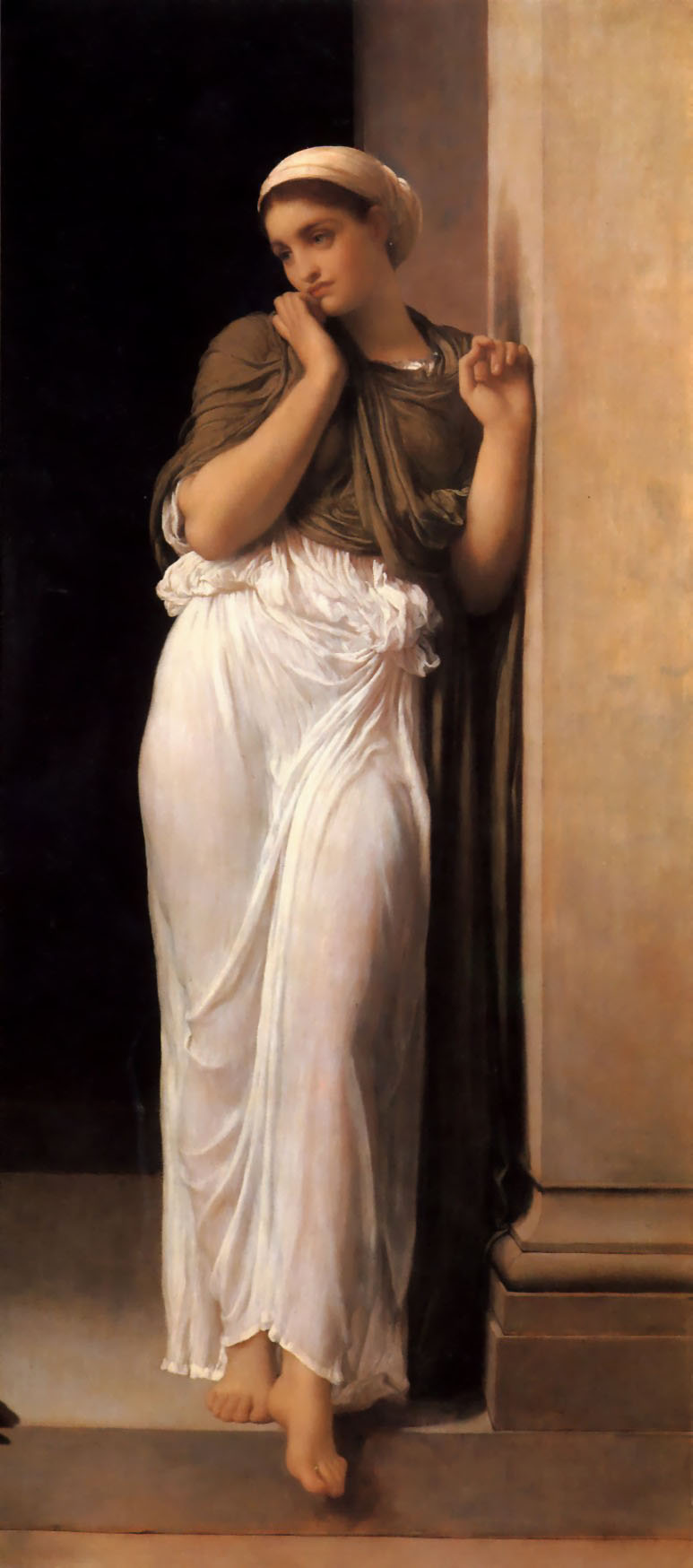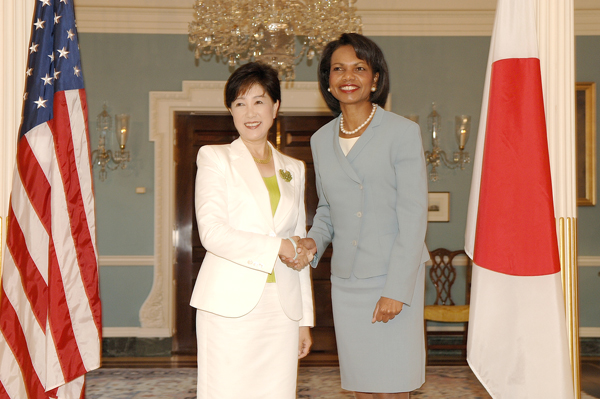|
Minamata Bay
Minamata is a small factory town. Minamata Bay is a bay on the west coast of Kyūshū island, located in Kumamoto Prefecture, Japan. The bay is part of the larger Shiranui Sea which is sandwiched between the coast of the Kyūshū mainland and the off-lying islands of Kumamoto and Nagasaki prefectures. The coastline is rugged, with many inlets and coves which act as the spawning grounds of fish and shellfish. A great variety of creatures live in this area. Minamata disease Minamata Bay was heavily polluted in the 1950s and 1960s by wastewater, mixed with mercury dumped into Hyakken Harbour from the Chisso Corporation's factory in Minamata, particularly by methylmercury. The highly toxic compound bioaccumulated in fish and shellfish in the bay which, when eaten by the people living around the bay, gave rise to Minamata disease. More than 10,000 people were affected. A memorial service was held at the Minamata Disease Municipal Museum on 1 May 2006 to mark 50 years since the ... [...More Info...] [...Related Items...] OR: [Wikipedia] [Google] [Baidu] |
Minamata Map Illustrating Chisso Factory Effluent Routes2
is a Cities of Japan, city located in Kumamoto Prefecture, Japan. It is on the west coast of Kyūshū and faces Amakusa islands. Minamata was established as a village in 1889, re-designated as a town in 1912 and grew into a city in 1949. As of March 2017, the city has an estimated population of 25,310 and a population density of 160 persons per km². The total area is 162.88 km². Minamata is known due to Minamata disease, a neurological disorder caused by mercury poisoning. The disease was discovered in 1956. A local chemical plant was blamed for causing the disease by emitting untreated wastewater into Minamata Bay. Lately, Minamata has focused on becoming a model environmental city. In 1999, the city obtained the ISO 14001 certification for Environmental Management. In 2001, Minamata became an official Japanese Eco-town. In 2004 and 2005, Minamata won the Japanese Top Eco-City contest. Minamata environmental disaster History The city is best known as the former sit ... [...More Info...] [...Related Items...] OR: [Wikipedia] [Google] [Baidu] |
Methylmercury
Methylmercury (sometimes methyl mercury) is an organometallic cation with the formula . It is the simplest organomercury compound. Methylmercury is extremely toxic, and its derivatives are the major source of organic mercury for humans. It is a bioaccumulative environmental toxicant. Structure and chemistry "Methylmercury" is a shorthand for the hypothetical "methylmercury cation", sometimes written "''methylmercury(1+) cation''" or "''methylmercury(II) cation''". This functional group is composed of a methyl group bonded to an atom of mercury. Its chemical formula is (sometimes written as ).The Methylmercury compound has an overall charge of +1, with Hg in the +2 oxidation state.Methylmercury exists as a substituent in many complexes of the type (L = Lewis base) and MeHgX (X = anion). As a positively charged ion it readily combines with anions such as chloride (), hydroxide () and nitrate (). It has particular affinity for sulfur-containing anions, particularly th ... [...More Info...] [...Related Items...] OR: [Wikipedia] [Google] [Baidu] |
Insights (album)
''Insights'' is the fourth studio recording of the Toshiko Akiyoshi – Lew Tabackin Big Band and was voted "Jazz Album of the Year" in the 1978 Down Beat magazine critic's poll. It received the Swing Journal magazine 1976 Gold Disk prize in Japan and was nominated for a 1978 Grammy award in the USA for Best Jazz Instrumental Performance by a Big Band. All tracks from this album are also included on the 2008 Mosaic 3 CD compilation, '' Mosaic Select: Toshiko Akiyoshi - Lew Tabackin Big Band''. Track listing :All songs composed and arranged by Toshiko Akiyoshi: LP side A #"Studio J" – 6:07 #"Transience" – 4:40 #"SUMIE" – 7:55 LP side B #"Minamata" (suite) – 21:36 ##"Peaceful Village" ##"Prosperity & Consequence" ##"Epilogue" Personnel *Toshiko Akiyoshi – piano *Lew Tabackin – tenor saxophone and flute *Tom Peterson – tenor saxophone *Dick Spencer – alto saxophone * Gary Foster – alto saxophone * Bill Perkins – baritone saxophone *Steven Huffst ... [...More Info...] [...Related Items...] OR: [Wikipedia] [Google] [Baidu] |
Toshiko Akiyoshi
is a Japanese–American jazz pianist, composer, arranger, and bandleader. Akiyoshi received fourteen Grammy Award nominations and was the first woman to win Best Arranger and Composer awards in '' Down Beat'' magazine's annual Readers' Poll. In 1984, she was the subject of the documentary '' Jazz Is My Native Language''. In 1996, she published her autobiography, ''Life with Jazz'', and in 2007 she was named an NEA Jazz Master by the U.S. National Endowment for the Arts. Biography Akiyoshi was born in Liaoyang, Manchuria, to Japanese colonists, the youngest of four sisters. In 1945, after World War II, Akiyoshi's family lost their home and returned to Japan, settling in Beppu. A local record collector introduced her to jazz by playing a record of Teddy Wilson playing " Sweet Lorraine." She immediately loved the sound and began to study jazz. In 1952, during a tour of Japan, pianist Oscar Peterson discovered her playing in a club on the Ginza. Peterson was impressed and convin ... [...More Info...] [...Related Items...] OR: [Wikipedia] [Google] [Baidu] |
Nausicaä Of The Valley Of The Wind (manga)
is a Japanese manga series written and illustrated by Hayao Miyazaki. It tells the story of Nausicaä, a princess of a small kingdom on a post-apocalyptic Earth with a toxic ecosystem, who becomes involved in a war between kingdoms while an environmental disaster threatens humankind. Prior to creating ''Nausicaä'', Miyazaki had worked as an animator for Toei Animation, Nippon Animation and Tokyo Movie Shinsha (TMS), the latter for whom he had directed his feature film debut, '' Lupin III: The Castle of Cagliostro'' (1979). After working on an aborted adaptation of Richard Corben's ''Rowlf'' for TMS and the publishing firm Tokuma Shoten, he agreed to create a manga series for Tokuma's monthly magazine ''Animage'', initially on the condition that it would not be adapted into a film. The development of ''Nausicaä'' was influenced by the Japanese Heian period tale ''The Lady who Loved Insects'', a similarly-named character from Homer's ''Odyssey'' and the Minamata Bay mercury ... [...More Info...] [...Related Items...] OR: [Wikipedia] [Google] [Baidu] |
Anime
is hand-drawn and computer-generated animation originating from Japan. Outside of Japan and in English, ''anime'' refers specifically to animation produced in Japan. However, in Japan and in Japanese, (a term derived from a shortening of the English word ''animation'') describes all animated works, regardless of style or origin. Animation produced outside of Japan with similar style to Japanese animation is commonly referred to as anime-influenced animation. The earliest commercial Japanese animations date to 1917. A characteristic art style emerged in the 1960s with the works of cartoonist Osamu Tezuka and spread in following decades, developing a large domestic audience. Anime is distributed theatrically, through television broadcasts, directly to home media, and over the Internet. In addition to original works, anime are often adaptations of Japanese comics (manga), light novels, or video games. It is classified into numerous genres targeting various broad and niche ... [...More Info...] [...Related Items...] OR: [Wikipedia] [Google] [Baidu] |
Manga
Manga ( Japanese: 漫画 ) are comics or graphic novels originating from Japan. Most manga conform to a style developed in Japan in the late 19th century, and the form has a long prehistory in earlier Japanese art. The term ''manga'' is used in Japan to refer to both comics and cartooning. Outside of Japan, the word is typically used to refer to comics originally published in the country. In Japan, people of all ages and walks of life read manga. The medium includes works in a broad range of genres: action, adventure, business and commerce, comedy, detective, drama, historical, horror, mystery, romance, science fiction and fantasy, erotica ('' hentai'' and '' ecchi''), sports and games, and suspense, among others. Many manga are translated into other languages. Since the 1950s, manga has become an increasingly major part of the Japanese publishing industry. By 1995, the manga market in Japan was valued at (), with annual sales of 1.9billion manga books a ... [...More Info...] [...Related Items...] OR: [Wikipedia] [Google] [Baidu] |
Yuriko Koike
is a Japanese politician who currently serves as the Governor of Tokyo since 2016. She graduated from the American University in Cairo in 1976 and was a member of the House of Representatives of Japan from 1993 until 2016, when she resigned to run for Governor of Tokyo. She also previously served as Minister of the Environment in the Junichiro Koizumi cabinet from 2003 to 2006 and briefly as Minister of Defense in the first cabinet of Shinzō Abe in 2007.Koike decides to leave post, cites responsibility over information leak , JapanNewsReview.com; accessed 18 June 2015. Koike was |
Ministry Of The Environment (Japan)
The is a Cabinet-level ministry of the government of Japan responsible for global environmental conservation, pollution control, and nature conservation. The ministry was formed in 2001 from the sub-cabinet level Environmental Agency established in 1971. The Minister of the Environment is a member of the Cabinet of Japan and is chosen by the Prime Minister, usually from among members of the Diet. In March 2006, the then-Minister of the Environment Yuriko Koike, created a ''furoshiki'' cloth to promote its use in the modern world. In August 2011, the Cabinet of Japan approved a plan to establish a new energy watchdog under the Environment Ministry, and the Nuclear Regulation Authority was founded on September 19, 2012. Organization * Minister's Secretariat (大臣官房) * (総合環境政策統括官) * Global Environment Bureau (地球環境局) * Environment Management Bureau (水・大気環境局) * Nature Conservation Bureau (自然環境局) * (環境再生・資源 ... [...More Info...] [...Related Items...] OR: [Wikipedia] [Google] [Baidu] |
Shunkichi Goto
Shunkichi (written: 俊吉 or 駿吉) is a masculine Japanese given name. Notable people with the name include: *, Japanese field hockey player *, Japanese photographer {{given name Japanese masculine given names ... [...More Info...] [...Related Items...] OR: [Wikipedia] [Google] [Baidu] |
Minamata Disease
Minamata disease is a neurological disease caused by severe mercury poisoning. Signs and symptoms include ataxia, numbness in the hands and feet, general muscle weakness, loss of peripheral vision, and damage to hearing and speech. In extreme cases, insanity, paralysis, coma, and death follow within weeks of the onset of symptoms. A congenital form of the disease can also affect fetuses in the womb and may cause cerebral palsy. Minamata disease was first discovered in the city of Minamata, Kumamoto Prefecture, Japan, in 1956, hence its name. It was caused by the release of methylmercury in the industrial wastewater from a chemical factory owned by the Chisso Corporation, which continued from 1932 to 1968. It has also been suggested that some of the mercury sulfate in the wastewater was also metabolized to methylmercury by bacteria in the sediment. This highly toxic chemical bioaccumulated and biomagnified in shellfish and fish in Minamata Bay and the Shiranui Sea, w ... [...More Info...] [...Related Items...] OR: [Wikipedia] [Google] [Baidu] |
Bioaccumulate
Bioaccumulation is the gradual accumulation of substances, such as pesticides or other chemicals, in an organism. Bioaccumulation occurs when an organism absorbs a substance at a rate faster than that at which the substance is lost or eliminated by catabolism and excretion. Thus, the longer the biological half-life of a toxic substance, the greater the risk of chronic poisoning, even if environmental levels of the toxin are not very high. Bioaccumulation, for example in fish, can be predicted by models. Hypothesis for molecular size cutoff criteria for use as bioaccumulation potential indicators are not supported by data. Biotransformation can strongly modify bioaccumulation of chemicals in an organism. Toxicity induced by metals is associated with bioaccumulation and biomagnification. Storage or uptake of metals faster than the rate at which an organism metabolizes and excretes lead to the accumulation of that metal. The presence of various chemicals and harmful substances in t ... [...More Info...] [...Related Items...] OR: [Wikipedia] [Google] [Baidu] |





